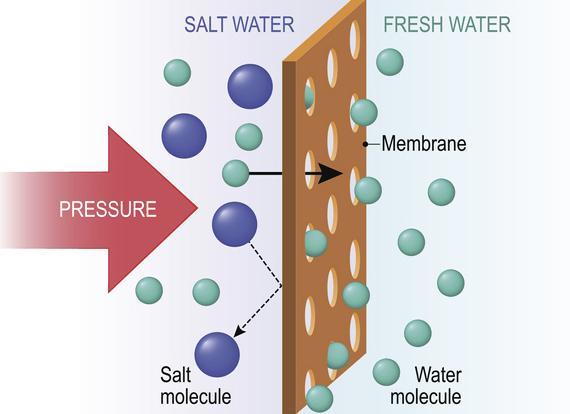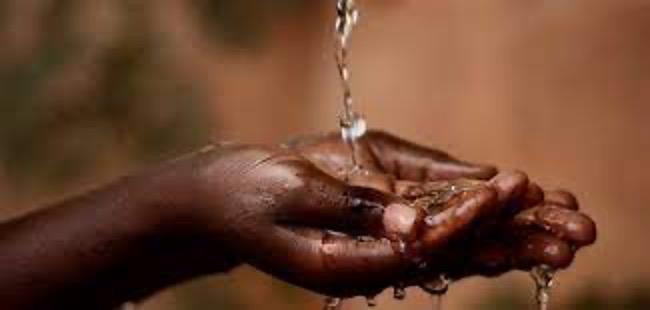Water is a Limited Resource
The majority of the Earth’s surface (about 70%) is covered in water, however, only very limited water is available for consumption. This includes drinking, cooking, washing and cleaning, and many other purposes. Furthermore, the limited water available must be managed for the entire 7 billion world population as well as other species. Of all the water resources, only about 3% of the Earth’s water is freshwater and only 1% is drinkable. The challenges of urbanisation and related climate changes increases the global disease burden. This in turn raises the demand for sustainable water purification technologies.

Clean Water and Sustainable Development Goals
‘Clean water’ refers to the water that is consumable without germs and impurities. Even though water is a basic human need, 29% of the human population does not have access to safe drinking water, leading to major global health burdens.
The availability of clean water and sanitation is one of the United Nation’s Sustainable Development goal – SDG-6. It does not stand alone, but is linked with many other sustainable development goals to be achieved by 2030. This includes improving health and wellbeing (SDG-3) through safe drinking water for all, developing infrastructure and urbanisation (SDG-9) for freshwater synthesis, and a gender equal (SDG-5) supply of sanitation. Hence, focusing primarily on SDG-6 with sustainable water purification technologies paves a significant pathway in achieving overall thrivability and sustainability.
Inaccessibility to Clean Drinking Water is a Global Health Burden
Poor-quality contaminated water is linked to the transmission of a variety of waterborne diseases, such as cholera, diarrhoea, and viral infections, such as hepatitis A, and typhoid (Werber et al., 2016). According to UNICEF data, these waterborne diseases cause the death of 1.6 million young children annually, among which the majority are girls.
Of all global deaths, 2.2% are caused by unsafe drinking water sources. Leading on this, the United Nation’s SDG-6 aims to provide 100% clean water for all. To provide better quality water, sanitation, and hygiene, (WASH), the United Nations promotes many approaches for sustainable development. Accordingly, the development of sustainable water management strategies and water purification technologies are high priorities.
Sustainable Water Management Strategies
Water purification technologies go hand-in-hand with the water management strategies, in which the sustainable strategies include ‘Production‘, ‘Reuse and recycle‘, and ‘Protection’.

Production refers to using natural resources, such as the ocean, rivers, and rain to obtain drinkable water.
Reuse and Recycle refers to repurposing the wastewater following disinfecting of disease-causing pathogens.
Protection refers to preventing further contamination of natural water resources by restricting the discharging of wastewater into clean water resources.
Water Purification Techniques
Water purification techniques are used to develop novel technologies to purify water from various sources. This is to render it drinkable or to be reused for other purposes. The techniques used to purify water can be complex and would depend on the contaminants in the original water source. Whichever way it may be, drinking water should adhere to Environmental Protection Agency (EPA) and World Health Organisation (WHO) standards for drinkable waters.
Some of the many techniques include ultraviolet (UV) light, reverse osmosis, electro-deionisation (EDI), ozonation, membrane-based ultrafiltration and nano-filtration, ion exchange, and biosorption at the industrial level, and low-cost household water treatment methods include chlorination, and boiling (Ahmed et al., 2019).
UV disinfectants
UV disinfectants use UV radiation to remove pathogenic microorganisms. The UV-C light at 264 nm wavelength is highly germicidal to bacteria, viruses and protozoa. When the pathogenic organisms are exposed to this UV radiation, it damages their DNA. It thereby destroys their livelihood and prevents their growth and multiplication. Water is passed through the apparatus emitting this specific UV light wave. This then kills the harmful microorganisms to provide chemical-free clean water.
Ultrafiltration and Nano-filtration
Both ultrafiltration and nano-filtration uses membrane filters. Ultrafiltration is used to purify water received from dams and river sources, where the water passes through a membrane filter with 1 – 100 nm pore size removing any bacteria, viruses, and protozoa. Nano-filtration uses smaller pore membranes of 1 nm size and is used to separate sulfates or to reduce the hardness components from hard water (water that has high mineral content).
Reverse Osmosis
Reverse osmosis is one of the commonly used nano-filtration water purification technologies. This process for the desalination of ocean water is widely observed in developed countriesl such as Singapore and the USA in order to supply their regular freshwater demand.

The water is passed through a semi-permeable membrane of 0.1 nm pore size at high pressure. This filters out the salt particles, thereby making the seawater drinkable.
Water Technologies for Rural Communities – Past and Ongoing Projects

THRIVE previously portrayed the All-in-One clean water solution introduced by the SOURCE. This simple, but advanced, technology used hydropanels to obtain clean water from the atmospheric air by condensation through sunlight.
In addition, the SafeWaterAfrica is an innovative collaborative project between European partner countries, i.e. Germany, Italy and Spain, and partners from South Africa and Mozambique. The project aimed to provide clean drinking water to communities in South Africa and Mozambique, which covered 40% of the total population without clean drinking water. The team introduced Carbon-based Electrochemical Oxidation (CabECO) technology, where a small low voltage direct current (DC) is applied between carbon-based electrodes to produce ozone and reactive OH radicals (ozonation) that are both toxic to microorganisms in the water. Maintaining sustainability, the system uses solar energy to power the units.
Moreover, the project Just One Africa introduced water filters in providing a simple and sustainable method of obtaining safe drinking water in Kenya. The technology was inspired by the natural kidney dialysis technique and uses fibre membranes and gravitational filtration to obtain clean drinking water. This extremely cost-effective technology only costs $65 to produce 1,000,000 gallons of water. This makes it fairly affordable to the Kenyan community.
Finally, the WaterNow Africa introduced a novel simplified technology to obtain purified drinking water without pre- or post-treatments and without harmful chemicals or membrane filters. The technology uses simple distillation with condensing coil and closed electric valves to convert water from various sources, such as rivers and oceans, within minutes.
This simple and mobile water purification system currently provides a sustainable pathogen-free drinking water supply in the African continent.
Accessibility to Water Purification Technologies is Still a Challenge
Despite advancements in water purification technologies, 1 in 3 people globally do not have access to clean drinking water. Poor reachability and difficulty in instating the technologies, housing schemes not being connected to water supply networks, and increasing demand with population growth are a few of the many challenges faced by the developing countries. Therefore, innovation and technological advancements are encouraged to give more attention to these challenges in meeting the clean water demand with more accessible water purification technologies.
To learn more about sustainability and thrivability measures, visit our THRIVE platform.






















